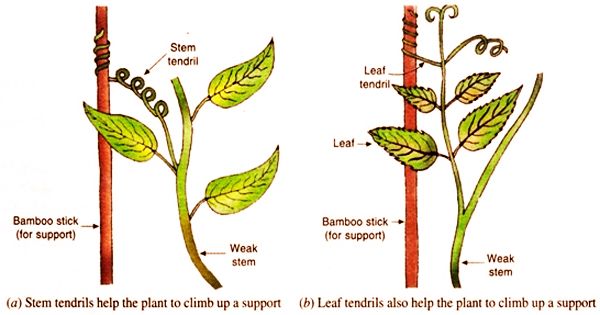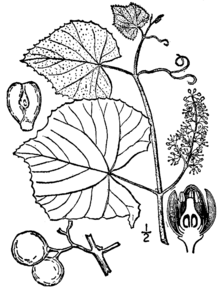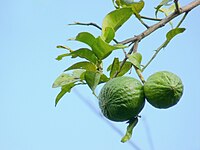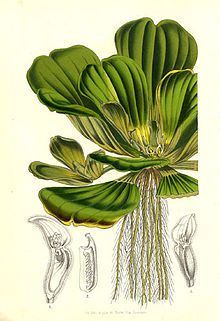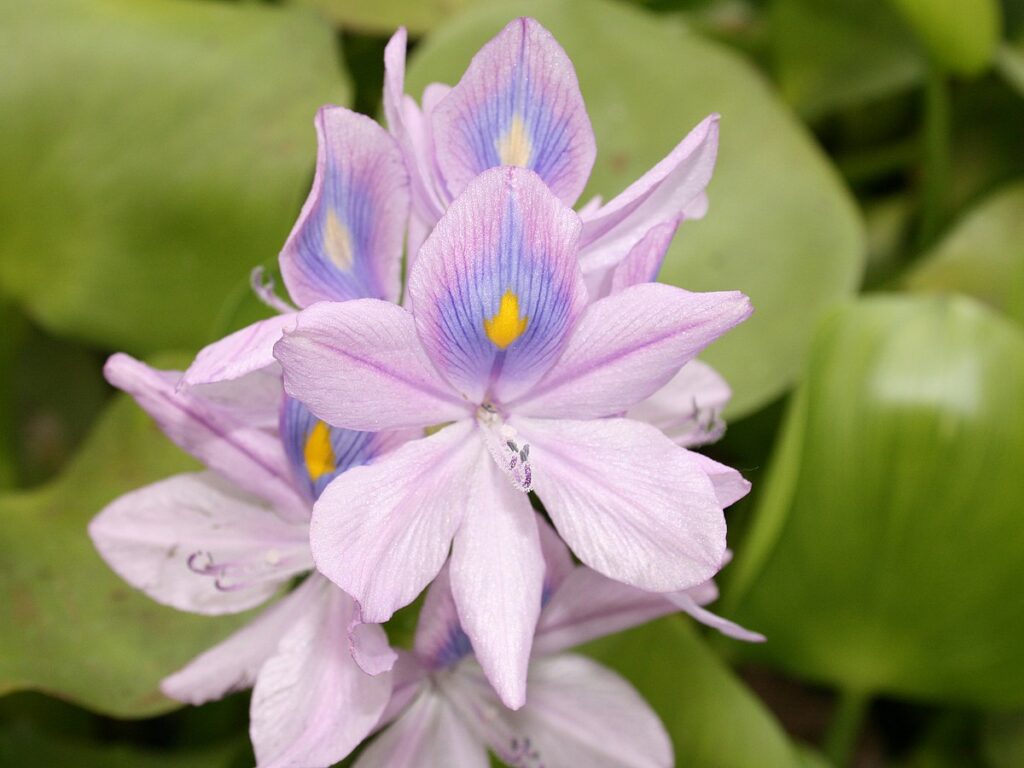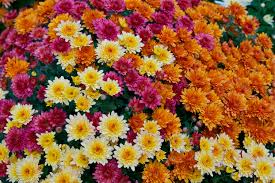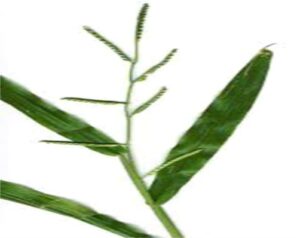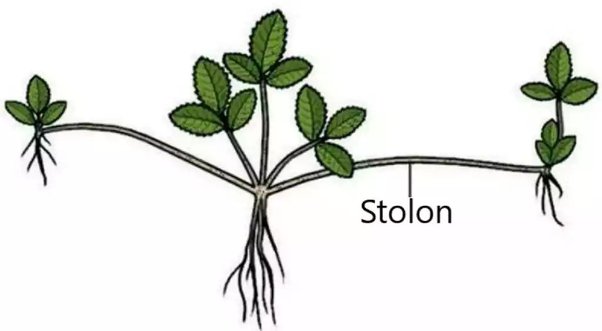INTRODUCTION
- The ascending part of the plant axis which bears branches, leaves, flowers and fruits is called stem. It develops from plumule.
- Stem is differentiated into nodes and internodes.
- The region bearing leaves, present at regular intervals on the stem and its branches are called nodes and the part of stem present between the two nodes is called internode.
- The stem bears buds which may be terminal or axillary.
- A bud is defined as the young, immature, under developed , compact shoot.
THE BUDS
- The buds present on the stem are of two types namely:-
(i) TERMINAL BUD/APICAL BUD
> The bud present at the tip of the stem is called terminal bud.> The growth of the stem and its branches is accomplished through the terminal bud.
> A remarkable structure found at the tip of a plant’s shoot or branch. It serves as the primary growth point of the plant, orchestrating the intricate processes of growth, development, and branching.
> The terminal bud charting the course for the plant’s growth and expansion. Perched at the apex of the shoot, this dynamic center of activity embodies the plant’s aspirations for upward growth and outward exploration.
> The terminal bud harbors a treasure trove of potential, containing a cluster of meristematic cells that fuel the plant’s continuous growth and development.
>The undifferentiated cells possess the remarkable ability to divide and differentiate, giving rise to new tissues and organs essential for the plant’s vitality and success.
> The terminal bud is more than just a center of growth; it is a master regulator of the plant.
> The terminal bud is not merely a point of convergence for stems and leaves; it is a testament to the plant’s determination to reach for the sun, to unfurl its verdant canopy in a dance of life and vitality.
> In its delicate embrace lies the potential for endless possibilities, each unfurling leaf a testament to the plant’s unwavering pursuit of growth.
(ii) AXILLARY BUD
- The leaf makes an angle with the upper part of the stem. The angle made between the leaves and the upper part of the stem is called the axil.
- The bud which is present at the axil is called axillary bud.
- Axillary buds are small, dormant structures found in the junction between a leaf and stem, known as the leaf axil.
- They play a crucial role in the growth and development of plants. Unlike apical buds, which are found at the tip of the stem and promote vertical growth, axillary buds are responsible for lateral growth and branching.
- Axillary buds serve as reserve structures that can be activated in response to damage. If the apical meristem (tip of the stem) is removed, axillary buds can become activated to produce new growth, aiding in the plant’s recovery.
- In some plants, axillary buds develop into flowers or reproductive structures.
- This allows for the production of seeds and ensures the continuation of the plant’s genetic lineage.
- Axillary buds have the potential to develop into branches, thereby increasing the overall canopy of the plant.
- This branching pattern enhances the plant’s ability to capture sunlight and photosynthesize efficiently.
- Axillary buds contribute to the overall architecture and adaptability of plants.
- Their ability to generate lateral shoots or flowers enhances the plant’s capacity to respond to changing environmental conditions, optimize resource utilization, and ensure reproductive success.
- Axillary buds are fundamental structures in the growth and development of plants, playing pivotal roles in branching, reproductive growth, and wound recovery.
- Their versatility underscores their significance in the life cycle and adaptability of various plant species.
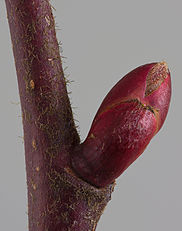
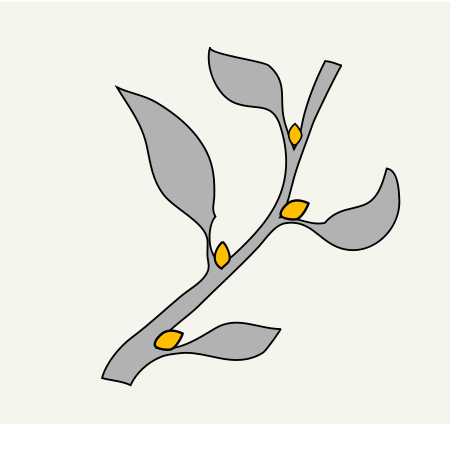
Function of The stem
- Stem bears and supports leaves, flowers and fruits.
- It conducts water and minerals salts from roots to leaves and fruits.
- The food manufactured in the leaves is transported to the roots, fruits and organs of storage through stem.
- The function of a plant stem is multifaceted and crucial for the overall health and growth of the plant.
- Vascular tissues within the stem, namely xylem and phloem, are responsible for conducting water and nutrients upward from the roots and distributing sugars produced during photosynthesis to various parts of the plant.
- Stems often store reserve materials such as starches, proteins, and water, which can be utilized during times of growth, flowering, or adverse environmental conditions.
- Some plants have specialized stems, like rhizomes or tubers, that are specifically adapted for storage purposes.
Vegetative Reproduction: Certain types of stems, such as runners, stolons, and rhizomes, have the capability to produce new plants vegetatively. These stems allow for asexual reproduction, enabling plants to propagate and colonize new areas.
Photosynthesis: Leaves are the primary site of photosynthesis, stems in some plants, particularly succulents and certain tropical species, can also perform photosynthesis.
This helps the plant to produce additional energy and sustain growth, especially in environments where leaves may be reduced or absent.
- Defense: In some plants, stems may have thorns, spines, or other structures that deter herbivores and protect the plant from damage.
Orientation: Stems often exhibit phototropism, gravitropism, and other tropic responses, allowing the plant to grow towards light sources or respond to gravity. This helps optimize light capture and overall plant growth.
Modifications of The stem
♥ Some of the stem modification occurring in plants are:-
A. Underground stem:- It is modified for storing food materials, which penetrates the soil and lies below it. They also act as organs of perenation to tide over conditions unfavourable for growth.
(a) Rhizome:- It grows parallel or horizontal to soil surface.It bears nodes ,internode, buds and scaly leaves e.g Ginger, Banana, Turmeric , Ferns.
(b) Tuber:- It is terminal portion of underground stem branch which is swollen on account of accumulation of food, e.g. Potato, Helianthus tuberosus (Jerusalem artichoke).
(c) Corm:- It grows vertically beneath soil surface. It is usually unbranched. It bears nodes, internodes, buds and scale leaves, e.g. Colocasia, Gladiolus, Crocus, Amorphophallus (Zaminkand).
(d) Bulb:- The stem is reduced and disc shaped. The bud is surrounded by many concentric scale leaves. Leaf bases of inner ones are fleshy and edible and of outer ones dry. e.g. onion, lily, garlic,
It is of two types:-
(i) Tunicated :- Tunicated bulb is covered by a sheath of membranous scales called tunic. It may be
(a) Simple tunicated bulb:- Covered by a shesth e.g. onion and Narcissus.
(b) Compound tunicated bulb:- Concentric rings of bulblets surrounded by a white membranous sheath or tunic e.g. garlic.
(ii) scaly :- Scaly or naked bulb do not have tunic e.g. lily.
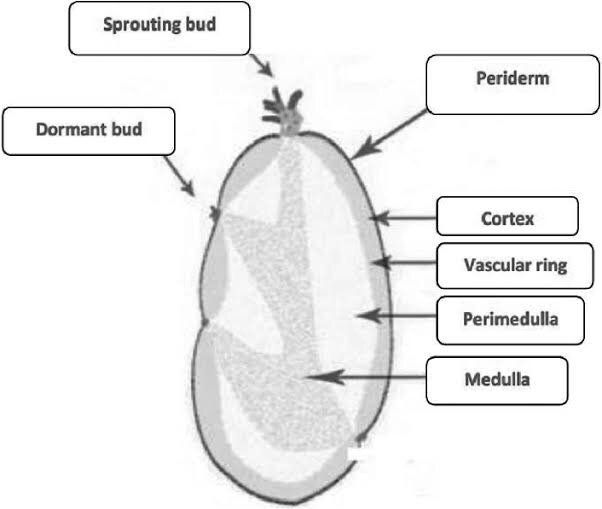
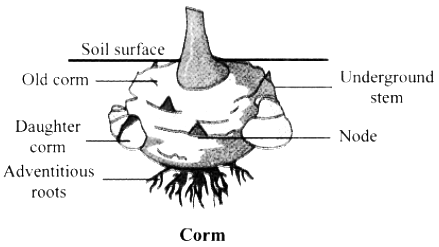
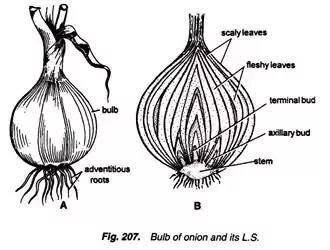
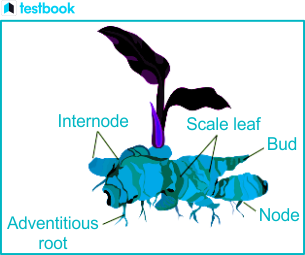
Modifications of The stem (cont…)
B. Stem tendrils:- In some plants the axillary bud modify to form tendrils. Tendrils are long, thin, thread-like spirally coiled, sensitive structures. They are the climbing organs e.g. grapevine, gourds (pumpkins, watermelon, cucumber).
C. Thorn:- The axillary buds of plants like Citrus and Bouganvillea lose their ability to grow and form hard woody and pointed structures called thorns. These thorns protect the plants from browsing animals.
D. Sub-aerial weak Stem:-
(i) Offsets:- Aquatic plants such as Pistia and Eichhornia contain a lateral branch which bear short internodes. In these lateral branches between the
two nodes decreases and each node bears a rosette of leaves above and
a duster (tuft) of roots below.
(ii) Suckers:- In banana , pineapple, Chrysanthemum etc. the lateral branches originate from the axillary bud of the underground portion of the main stem. They grow below the soil surface to some distance and then emerges out obliquely to form the aerial shoot.
(iii) Runners:- It is elongated, prostrate, branch with long internodes and roots at nodes e.g. grasses.
(iv) Stolons:- In plants like mint and jasmine a slender lateral branch
arises from the base of the main axis and after growing aerially for
some time arch downwards to touch the ground. Example- Jasmine, Mint.
(v) Aerial stem:- Plants present in and regions modify their stem into flattened (Opuntia) or fleshy cylindrical structures (Euphorbia), called phylloclade. These structures are green in clour due to the presence of photosynthetic pigments. These have unlimited growth.
